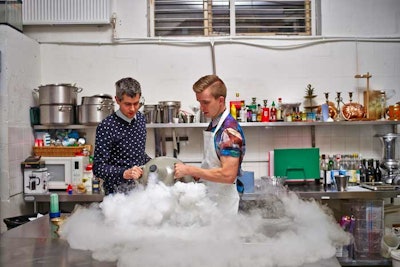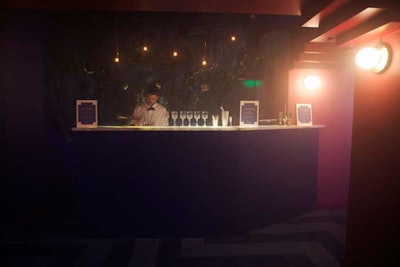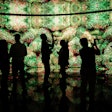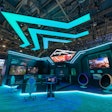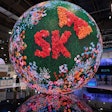Sipping a cocktail through a straw is so five minutes ago—according to Sam Bompas and Harry Parr.
In July, the London-based culinary duo, who started out as craft jelly purveyors in 2007, debuted its latest project, Alcoholic Architecture. Featuring a breathable cocktail cloud, the installation has been dubbed the “world’s first alcoholic weather system.”
Located in a Victorian building at Borough Market, the bar includes the boozy cloud, monastic-outfitted bartenders, and an albino python in the women’s restroom for an added shot of kookiness.
In addition to cooking up awe-inspiring food and architectural installations, Bompas & Parr, a production studio with a team of creative specialists, designers, and technicians, also consults for big-name brands on product development and promotional and marketing initiatives. The studio has worked with Diageo and Mercedes-Benz, as well as with venues such as the San Francisco Museum of Modern Art and the Royal Botanic Gardens.
With plans to bring Alcoholic Architecture stateside, co-founder Sam Bompas shared plans for his team’s latest project and what to expect in the future.
What inspired the original idea for an alcoholic cloud?
At Bompas & Parr, we’ve conquered countless temporary events and installations. From cooking with lava to hosting the New Year’s Eve fireworks for London for a quarter of a million people—where you could taste the fireworks in the sky and they were fruity!
One of the frustrations of doing things, like flooding buildings with booze that people boat across before drinking, is that they are short-lived. We’ve been hungry to do a longer project that more people can come to for some time now. This bar is our wild fantasies made reality.
The original inspiration came from jelly (of course). Jelly is effectively a cocktail made semisolid. Alcoholic Architecture changes the state of [matter] in the other direction—making a vapor and exploding it to an immersive, inhabitable scale.
How does this new bar differ from your 2009 project? [Bompas & Parr created a temporary pop-up version of Alcoholic Architecture in 2009.]
The first bar tested the water and allowed us to establish how the technology could potentially work. We’ve then spent the last six years developing this and honing our skills with experiential events and design. So this bar amounts to over six years of work, insight, and development.
Do you think alcoholic vapor will be a new trend? Any plans to bring it to the United States?
Absolutely, but it has to be done with flair and panache! We do a few projects each year in the U.S. These range from an exhibition at MoSex [Museum of Sex] to presenting a working cocktail organ that manipulates your sense of flavor as it plays. We've even cooked with lava—1.1 billion-year-old molten rock in upstate New York. We currently have a number of plans to bring Alcoholic Architecture to the U.S. and are locking in contracts with partners right now.
Can you offer any hints on your upcoming projects?
Our next large-scale project is to open the British Museum of Food, arguably the most important national cultural institution to arrive in the U.K. for the last decade. Not only will it look at important issues such as nutrition, food security, and sustainability, but it will feature exhibits such as "Be the Bolus," where you can experience what it's like to take a journey along the body's alimentary canal—from mouth to anus. And a laser butterfly house…
What foods and drinks are you hoping to incorporate into an installation? Is there anything that's been particularly challenging to work with?
There are basically XX ingredients that get people really excited and should be the focus of your creative endeavors if you really want to grab people in the most sensitive place—the stomach! These are alcohol, coffee, chocolate, sugar, and meat. You'll note that they are all either addictive or high in the holy trinity of food—sugar, fat, and salt.
Of all of these, chocolate is particularly problematic and led to one of Bompas & Parr's most challenging projects: a chocolate climbing wall featuring a four-ton chocolate waterfall. ... The complexity around working with chocolate meant that it was one of hardest things we've ever worked on.
